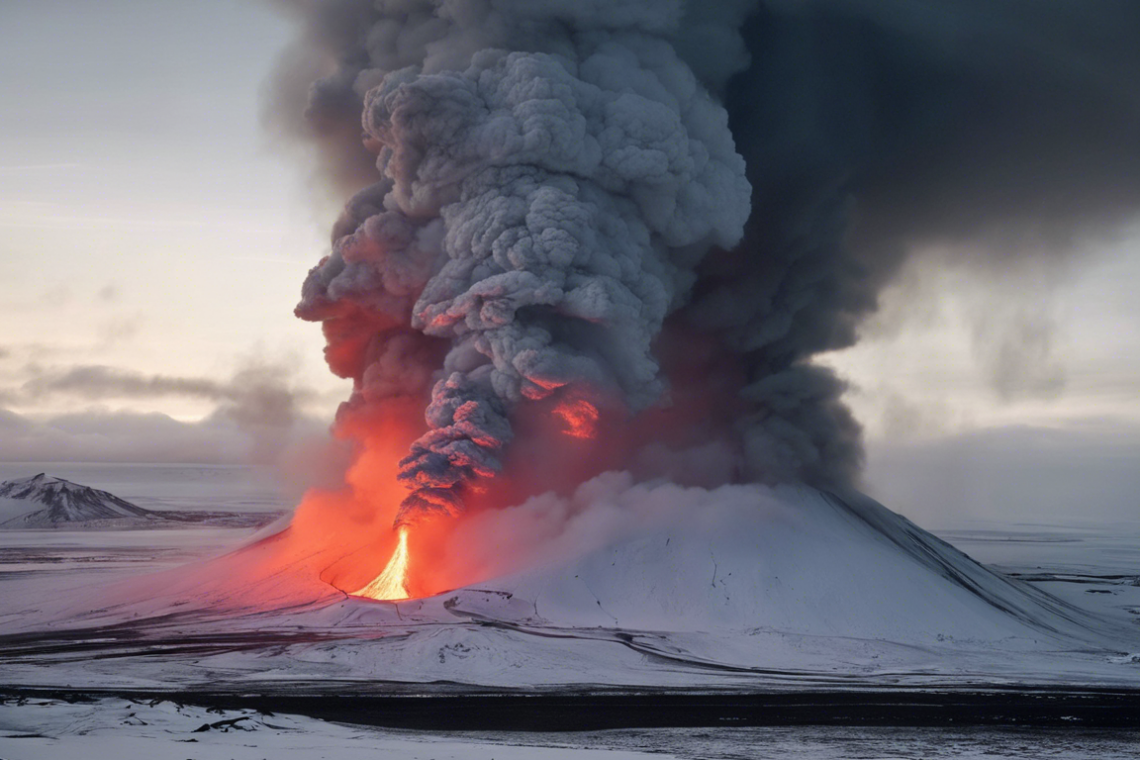Uncovering the Chaos: Iceland’s Volcano Eruption
Introduction
Iceland, known for its stunning landscapes and natural beauty, is also home to numerous active volcanoes. The country’s unique geological setting, situated on the Mid-Atlantic Ridge, makes it a hot spot for volcanic activity. One of the most infamous volcanic eruptions in recent history is that of Eyjafjallajökull in 2010, which brought European air travel to a standstill. This event shed light on the potential chaos that volcanic eruptions can cause, not just locally, but also on a global scale. In this article, we delve into the fascinating world of Iceland’s volcano eruptions, exploring their causes, impacts, and significance.
Understanding Icelandic Volcanoes
Iceland sits atop the boundary between the North American and Eurasian tectonic plates, making it highly active in terms of geological phenomena. The island boasts around 130 volcanoes, both active and inactive, with eruptions occurring approximately every 4-5 years on average. These volcanoes are classified into different types based on their eruption style, such as explosive and effusive eruptions.
Causes of Volcanic Eruptions in Iceland
The primary cause of volcanic eruptions in Iceland is the movement of tectonic plates. As the North American and Eurasian plates pull apart, magma from the mantle rises to fill the void, leading to volcanic activity. Additionally, Iceland’s hotspot, located beneath the island, also contributes to the volcanic activity by providing a constant source of heat.
Impact of Volcanic Eruptions
When a volcano erupts in Iceland, the effects can be felt both locally and globally. Locally, eruptions can lead to ash fall, lava flows, and toxic gas emissions, which pose significant risks to the population and infrastructure. Globally, volcanic eruptions in Iceland can disrupt air travel, as seen during the Eyjafjallajökull eruption in 2010 when ash clouds grounded flights across Europe.
Famous Icelandic Volcanoes
-
Eyjafjallajökull: This volcano gained international attention in 2010 when its eruption caused widespread disruption to air travel.
-
Katla: Known as one of Iceland’s most active volcanoes, Katla poses a significant threat due to its proximity to Eyjafjallajökull.
-
Bárðarbunga: This volcano made headlines in 2014-2015 with its Holuhraun eruption, which produced the largest lava flow in Iceland in over two centuries.
-
Hekla: Often referred to as Iceland’s “Gateway to Hell,” Hekla is one of the most active and unpredictable volcanoes in the country.
Monitoring and Mitigation
Given the potential risks associated with volcanic eruptions in Iceland, monitoring and mitigation efforts play a crucial role in ensuring public safety. The Icelandic Meteorological Office closely monitors volcanic activity using a network of seismometers, GPS stations, and gas sensors. In the event of an impending eruption, authorities issue warnings and implement safety measures to protect residents and visitors.
Frequently Asked Questions (FAQs)
-
Q: How often do volcanic eruptions occur in Iceland?
A: On average, volcanic eruptions occur in Iceland every 4-5 years. -
Q: What was the impact of the Eyjafjallajökull eruption in 2010?
A: The Eyjafjallajökull eruption in 2010 disrupted air travel across Europe due to ash clouds. -
Q: Are there any warning signs before a volcanic eruption in Iceland?
A: Yes, increased seismic activity, ground deformation, and gas emissions are common precursors to volcanic eruptions. -
Q: How does Iceland monitor volcanic activity?
A: The Icelandic Meteorological Office monitors volcanic activity using seismometers, GPS stations, and gas sensors. -
Q: Which Icelandic volcano is known as the “Gateway to Hell”?
A: Hekla is often referred to as Iceland’s “Gateway to Hell” due to its unpredictable nature.
Conclusion
Iceland’s volcanic activity serves as a reminder of the raw power of nature and the importance of preparedness in the face of such events. By understanding the causes, impacts, and mitigation strategies related to volcanic eruptions in Iceland, we can better appreciate the beauty and danger that coexist on this geologically dynamic island. As we continue to study and monitor Iceland’s volcanoes, we gain valuable insights into the Earth’s inner workings and our ability to adapt to the forces that shape our planet.








